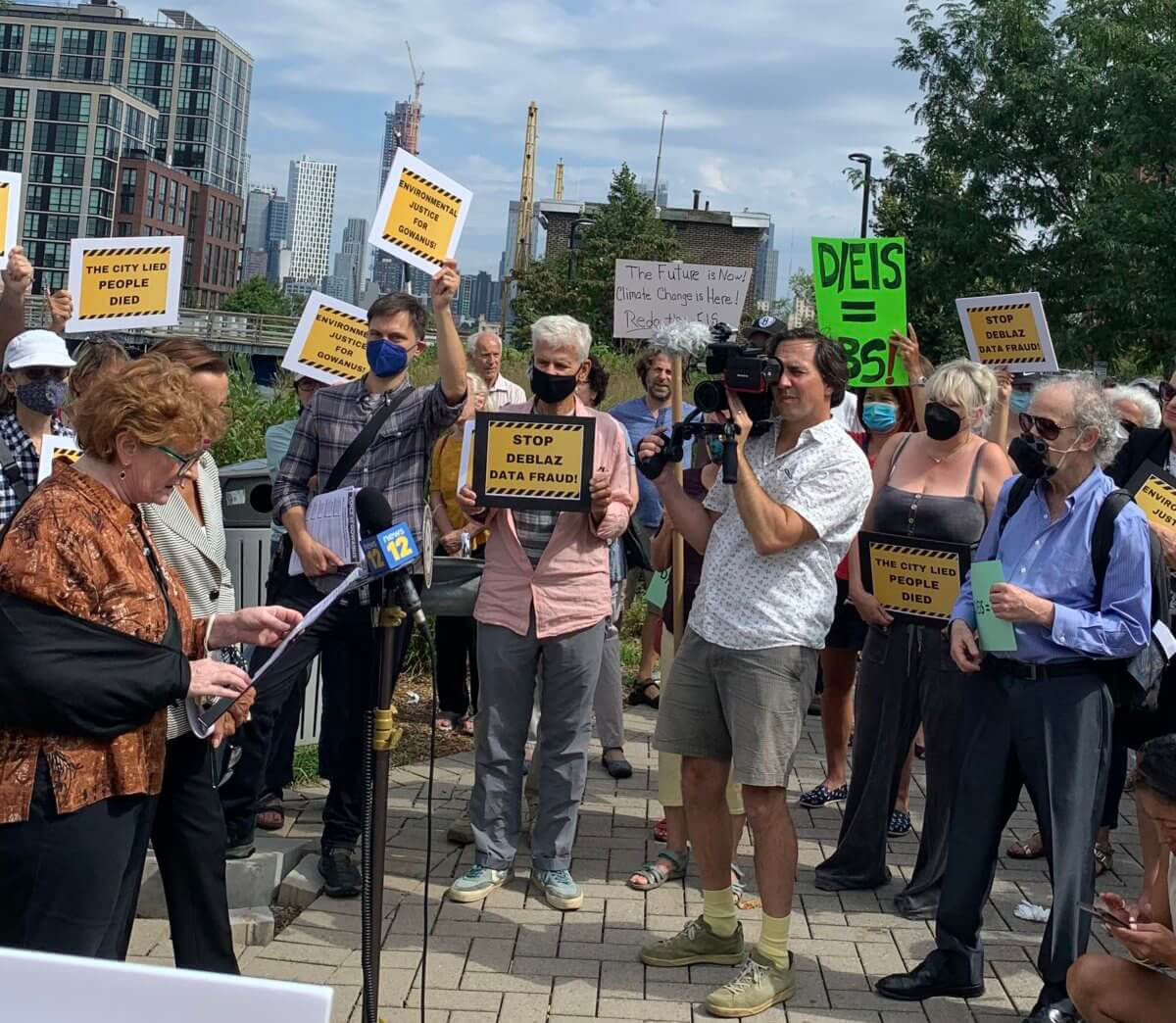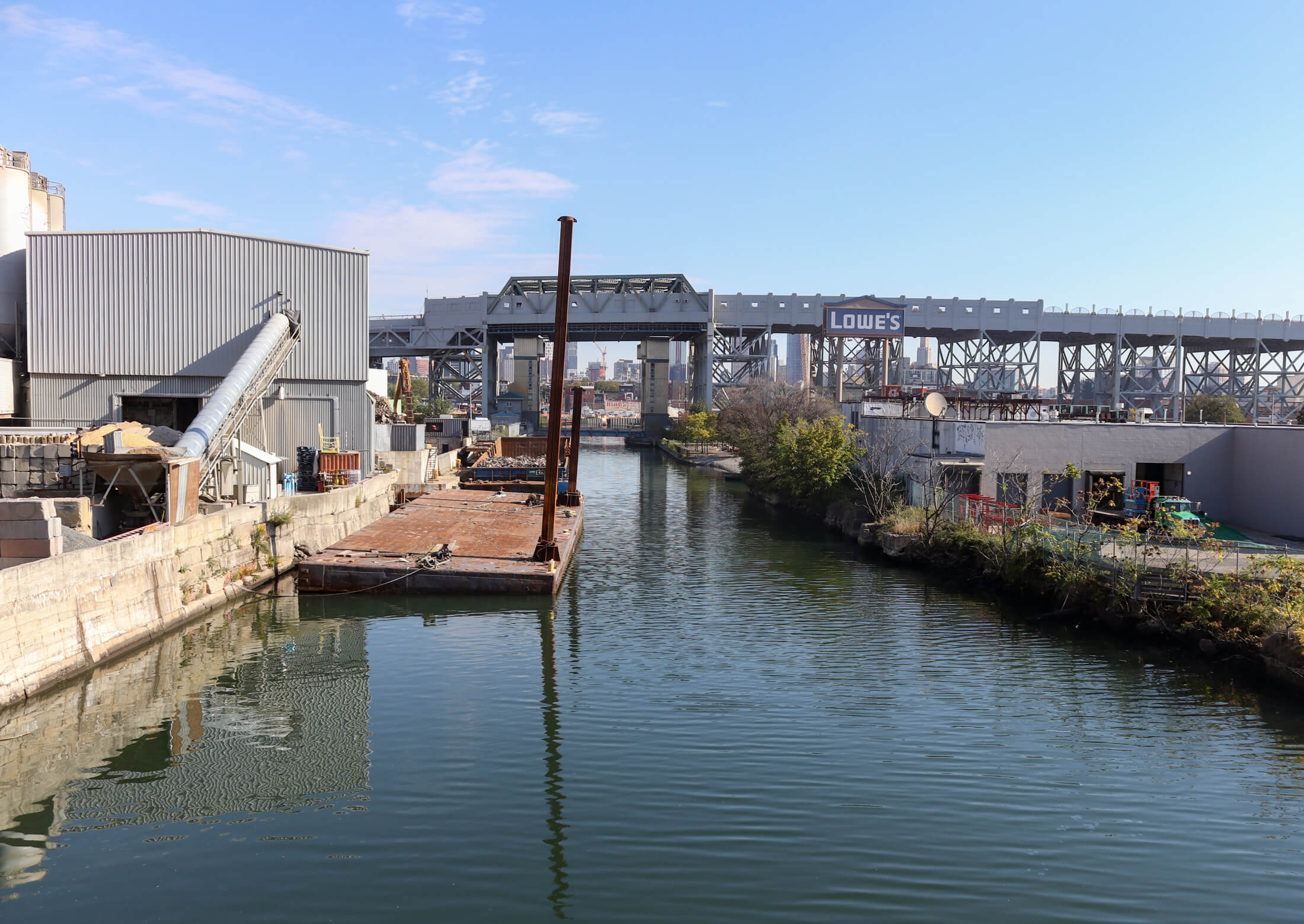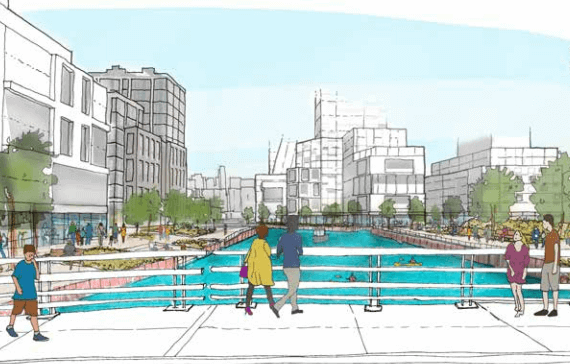Local Pols Want Gowanus Rezoning Halted Pending Further Study
Citing “inconsistencies and contradictions” with the city’s environmental review of the proposed Gowanus rezoning, a pair of local electeds are demanding Mayor de Blasio’s administration halt the process until a new study can be completed.

Gowanus resident Nora Almeida says the city needs to address community concerns regarding affordable housing and the environmental impact of the Gowanus rezoning. Photo by Kirstyn Brendlen
Citing “inconsistencies and contradictions” with the city’s environmental review of the proposed Gowanus rezoning, a pair of local electeds are demanding Mayor de Blasio’s administration halt the process until a new study can be completed.
“We find serious problems with the City’s Gowanus Neighborhood Rezoning and accompanying Draft Environmental Impact Statement (DEIS), which is fraught with inconsistencies and contradictions that the U.S. Environmental Protection Agency (EPA) has outlined,” wrote Congress Member Nydia Velázquez and Assembly Member Jo Anne Simon.
Mayor Bill de Blasio has championed the proposed neighborhood-wide land use changes, which would allow for developers to erect taller buildings in the area — and bring some 8,000 new housing units, including about 3,000 income-targeted affordable apartments.
First, however, the idea must go through the city’s Uniform Land Use Review Procedure (ULURP), which requires advisory input from the local community board and the borough president, along with binding votes by the City Planning Commission and the City Council.

As part of the seven-month rezoning process, which officially began in April after a series of court battles, the city’s Department of Environmental Protection (DEP) produced a required Draft Environmental Impact Statement that assessed several environmental factors — such as traffic patterns, noise levels, displacement of open spaces, and how the development will impact air quality, sewage and climate change.
While the proposal snakes its way through the various stages of the process, community members, organizations, and government agencies can voice their concerns at public hearings. Concerned stakeholders can also submit written comments.
The feds step in
One such entity that provided written comment was the federal Environmental Protection Agency (EPA), which fired off a 47-page letter last month citing “a number of inconsistencies” in the way the impact statement presented data on stormwater and wastewater.
They also blasted the city for lacking “adequate clarity” regarding the data and modeling the DEP used when calculating the impact of the rezoning on combined sewer overflows.
Among the major objections cited, the EPA pointed out that the environmental impact statement used storm data from 2008, despite more recent data being available from 2020, which shows a more alarming potential rise in precipitation and sea levels.
As a result, the EPA said it was unable to assess whether or not the rezoning will really have a “net zero” impact on Combined Sewer Overflows, or how the city’s new Unified Stormwater Rule — which, among other things, requires builders to install stormwater retention methods — will come into play.
“We’re here today because, as President Biden said yesterday, climate change is an existential threat, it’s here, it’s not going to get better,” Simon said at a September 8 press conference. “It could get a lot worse. We can help forestall that, but it is not going to get better.”

The concerns came just a week after Hurricane Ida dumped historic amounts of rainfall on New York City, causing catastrophic flooding in Brooklyn — including damaging flooding at the local Arts Gowanus.
“As I have said in the past, New York City’s infrastructure is not where it needs to be to withstand climate change. Tragically, we saw this again last week with Ida,” said Representative Velázquez. “When it comes to the Gowanus rezoning the City’s environmental impact assessment is wrought with inconsistencies and contradictions.”
Nora Almeida, a Gowanus resident and member of Voice of Gowanus, said she’s frustrated with the lack of action taken by the city council and de Blasio.
“I think that a lot of politicians are here to make a show about caring about people who live here and about the environmental justice concerns, but I would like to see them take action on the things they’re speaking about,” she said.
Supporters of the rezoning, however, have argued that allowing more residents to live in walkable areas that are dense with public transportation options, such as Gowanus, would be a net positive for eliminating per-capita carbon emissions — and therefore reduce the runaway greenhouse effect responsible for climate change.
Likewise, Mitch Schwartz, a spokesman for the mayor’s office, said the current plan for Gowanus addresses the neighborhood’s needs, and provides a long-overdue update to the area’s zoning regulations.
“Gowanus’ zoning codes haven’t been updated since 1961, and our plan reflects the needs that’ve emerged in all the decades since, including climate resiliency protections,” Schwartz said. “Paired with the city’s coming storm water rule, the Gowanus Plan significantly reduces unsafe sewage overflow.”
Andrea Parker, executive director of the Gowanus Canal Conservancy, wants to see the city commit to a comprehensive flood resiliency study as part of the rezoning’s ULURP process. That would go “above and beyond” the impact statements, she said, and would incorporate new flood maps, and would consider the combined risk of increased precipitation, sea and groundwater level rise, and storm surges in deciding what infrastructure is needed in the neighborhood.
“Really, the question is, how do we live within a floodplain here, how do we protect existing residents and businesses, and plan for landscapes and buildings that can flood, can withstand flooding, and not have the kind of damage we saw last week,” Parker said.
She also noted that comprehensive rezoning could include infrastructure that will mitigate flooding. Under current plans, new development would have built-in resiliency measures — green roofs, improved drainage, and better stormwater control measures. Still, she said, more investment is needed to protect existing residents and businesses.
Community Board 6 and Borough President Eric Adams, the likely next mayor, have both approved the rezoning with long lists of conditions — including implementing a “Gowanus Rezoning Commitment Task Force” that would independently monitor the rezoning, ensuring public and private entities were abiding by the conditions set for the project.
Both CB6 and Adams’ approval and conditions are advisory, while the DCP may take their considerations into account, they don’t have to.
A race against time
Simon, who has a history of opposing large-scale development projects, including the creation of the Barclays Center in 2011, also tried to stall the Gowanus rezoning last year, arguing that the COVID-19 pandemic robbed locals of their ability to voice their concerns.
While both efforts to halt the process would likely only slow it down, any setbacks could ultimately kill the rezoning entirely, if it drags into 2022.
Mayor de Blasio and current Gowanus Councilmember Brad Lander both support the concept of the rezoning, but both men will be term-limited from office on January 1 of next year.

If the proposal is left up to the next City Council, Shahana Hanif, Lander’s likely successor, has voiced opposition to the plan — and, as the area’s representative, she would have near-total authority in the legislature due to an unwritten custom called member deference, and therefore could kill the plan entirely.
If de Blasio and Lander have their way, though, the process will be completed before the new year — unless Simon and Velázquez can successfully kick the can down the road.
For her part, Simon simply argues that local community members should have greater impact over the rezoning process.
“One of the great frustrations of ULURP — which needs to be fundamentally reformed — is that it was made to look like the community had input, but they never really did,” Simon told Brooklyn Paper. “They take all these advisory things, and essentially it’s the City Planning Commission and the City Council. That’s all that matters, is what the council votes on.”
The voices of community members who know their neighborhoods best are easily overlooked, Simon said, drowned out by elected officials or city agencies.
“The city needs to do much more now to ensure responsible development in the future, especially with record-setting storms now being the norm. Mother Nature will not be fooled by the city’s use of pre-Sandy, pre-Superfund data,” the letter concludes.
“We look forward to your prompt response and a new DEIS to address EPA and community concerns.”
Editor’s note: A version of this story originally ran in Brooklyn Paper. Click here to see the original story.
Related Stories
- Eric Adams Puts Support Behind Gowanus Rezoning, Pending Investment in NYCHA
- CB6 Land Use Committee Approves Gowanus Rezoning Plan With Long List of Conditions
- Developer Looks to Gowanus MTA Station Air Rights to Increase Size of Mixed-Use Tower
Email tips@brownstoner.com with further comments, questions or tips. Follow Brownstoner on Twitter and Instagram, and like us on Facebook.









What's Your Take? Leave a Comment